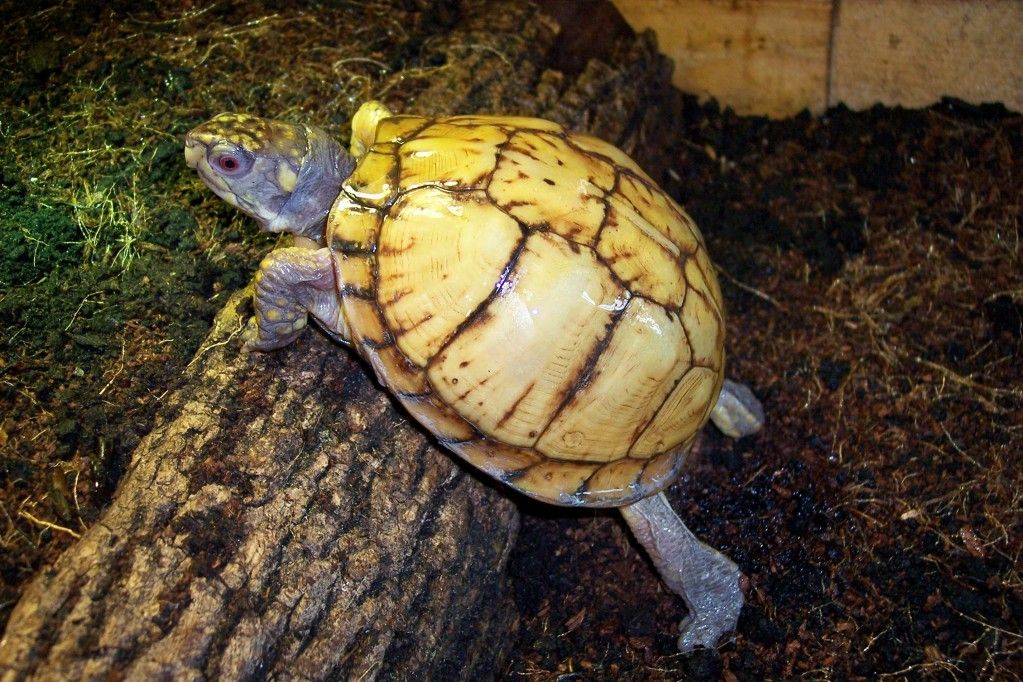You are using an out of date browser. It may not display this or other websites correctly.
You should upgrade or use an alternative browser.
You should upgrade or use an alternative browser.
Just what does "LEUCISTIC" mean?
- Thread starter N2TORTS
- Start date
Good stuff guys. Good thread.
When someone first told me the chelonian was pronounced "key-lonian," my head almost exploded. What a total mind blow. Obviously that applies to anything in Latin that has a "ch" in it.
I didn't know that the term leucistic was of Greek/Latin origin. Makes sense now though, just never made that connection.
So all the animals that people call 'leucys" should actually be pronounced Lukeys. What a mind blow..
When someone first told me the chelonian was pronounced "key-lonian," my head almost exploded. What a total mind blow. Obviously that applies to anything in Latin that has a "ch" in it.
I didn't know that the term leucistic was of Greek/Latin origin. Makes sense now though, just never made that connection.
So all the animals that people call 'leucys" should actually be pronounced Lukeys. What a mind blow..
In Greek, we use the word "xelona". The pronunciation is kind of like "hyeh-low-nah". Then we say "neh-roh hyeh-low-nah" for water turtle. The only sea turtles I think we deal with over there are loggerheads, so pretty much everyone just calls them "kah-reh-tah kah-reh-tah". At least the folks I have talked to.
I prefer the "ter-tul" pronunciation as used by my great grandparents.
jtrux said:I prefer the "ter-tul" pronunciation as used by my great grandparents.
An old man in the village where I found my first hermanni saw me carrying it while walking alongside the street towards the town square. The old man had a stand where he sold honey and a kind of sesame seed candy that is or used to be common over there. He asked me how we say it in America. I told him "ter-tul" and he said something like "too-too", so that became the name for my first tortoise. Tootoo. May he rest in peace and may my mother never live down accidentally killing him when I was away at a survival camp years later. She still feels guilty.
I mean my mother killed the tortoise. Not the old man. lol
I'd feel guilty too if I accidentally killed an old man. 
Sent from my Nexus 7 using TortForum mobile app
Sent from my Nexus 7 using TortForum mobile app
Baoh said:Hypo with an exceptional reduction of erythristic pigment on the head scales. Not an anerythristic animal, though, as it still has some red.
I also like the purple-ish looking skin.
This could still be a partially anerythristic tortoise if there is more than one gene involved with producing the red color in red-footed tortoises.
In corn snakes there are black and silver anerythristics and then anerythristics that have a sort of cinnamon or reddish brown color where there is certainly some 'reddish' gene involved. I haven't kept up with all of that stuff for a long time so I might be a little off, but I remember colubrid mutation pioneers Bill and Kathy Love and Dr. Bernard Bechtel saying that there wasn't just one gene controlling the red colors found in corn snakes.
JD's odd looking hatchling may in fact be expressing more than one mutation.
cdmay said:Baoh said:Hypo with an exceptional reduction of erythristic pigment on the head scales. Not an anerythristic animal, though, as it still has some red.
I also like the purple-ish looking skin.
This could still be a partially anerythristic tortoise if there is more than one gene involved with producing the red color in red-footed tortoises.
In corn snakes there are black and silver anerythristics and then anerythristics that have a sort of cinnamon or reddish brown color where there is certainly some 'reddish' gene involved. I haven't kept up with all of that stuff for a long time so I might be a little off, but I remember colubrid mutation pioneers Bill and Kathy Love and Dr. Bernard Bechtel saying that there wasn't just one gene controlling the red colors found in corn snakes.
JD's odd looking hatchling may in fact be expressing more than one mutation.
I am thinking horses instead of zebras upon hearing hooves on this one. It has some red. It is most likely a variation on a theme like when I get a redfoot baby that has less red than its sibling but still has some red.
Also, serpent traits are likely not relevant in the same way that leopard gecko traits are not. Hypomelanism in leopard geckos is polygenic and appears to behave as though dominant due to this. There are three varieties of hypoxanthic forms, one of which is line bred and two of which are governed by two different alleles at the same loci (which is very cool). The hypoxanthic form is also a hypoerythristic form. If the super form is achieved, the animal is typically then both axanthic and anery. I do not considerate related to the behaviors seen in our tortoise miorphs just far. As an aside, most of what I have been able to see in tortoise morphs thus far consists of simple recessives. Dominant trait would be nice to have in the mix, too, although their value would plummet compared to recessives after enough male animals got out.
yagyujubei said:
The phenotype has some hypomelanistic qualities, but I would personally describe it phenotypically as more of a hyperxanthic animal. Genetically, I cannot say. It would require a bunch more test breedings, adulthood results, and further generational observations to define the behavior with the necessary math.
Also, it is gorgeous.
As a general rule, yes, a leucistic animal is worth more to a collector than the normal colored animal.
Similar threads
- Replies
- 4
- Views
- 2K
- Replies
- 1
- Views
- 2K

